Latinx Files: The bad Spanish of the ‘Breaking Bad’ universe
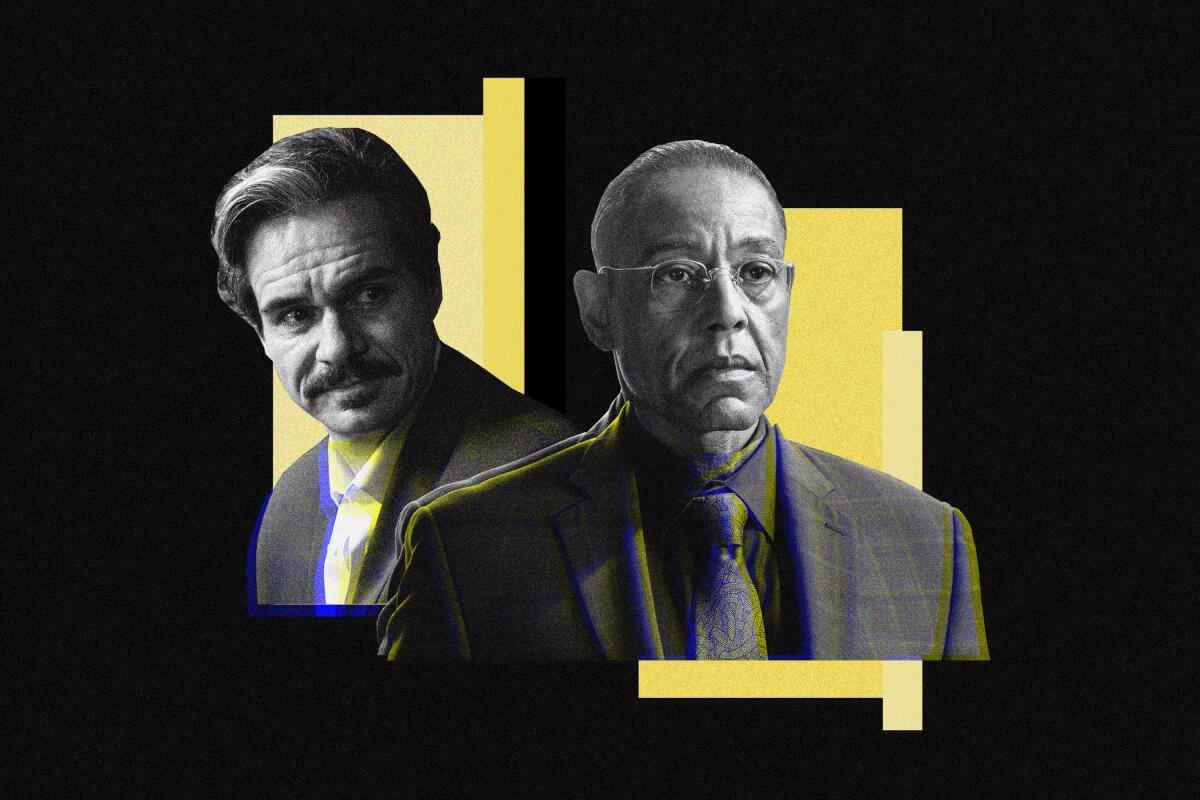
- Share via
For the last few weeks, ahead of its series finale two Mondays from now, I’ve been rewatching “Better Call Saul.”
The “Breaking Bad” prequel has become one of my favorite TV shows of the last decade. It’s a slow burn noir about a man who can’t escape his doom despite his best efforts, a retelling of the scorpion and frog fable. It’s six seasons of messing around and finding out.
It’s flawless television, except for one glaring detail: the occasional horrendous usage of Spanish.
It’s “¿Dónde está la biblioteca?”-level bad.
“Sabrosito,” the fourth episode of the third season, is a perfect example. It’s a crucial episode, not just to the series but also to the broader “Breaking Bad” universe, because it shows the moment in which it became personal between the Salamanca family and Gustavo Fring (played by Giancarlo Esposito).
In this scene, Hector Salamanca (Mark Margolis) pays a visit to Don Eladio (Steven Bauer), the head of The Cartel (yes, that’s the name of the organization). The Salamanca patriarch has come to his boss’ compound (we know it’s in Mexico because of the sepia filter) to tell him of an ice cream business he just bought in Michoacan that has a location in Albuquerque. This new venture is a front, one that will help the Salamancas smuggle drugs into the United States and make The Cartel more money. Hector delivers this news with a novelty bobblehead of the business’ mascot and a duffle bag full of cash.
But whatever adulation Hector thought he was getting is quickly upended by the arrival of Juan Bolsa, another cartel boss, his equal. Bolsa has also come bearing gifts for Don Eladio, handing him a T-shirt for Los Pollos Hermanos, the chicken franchise owned by Gus Fring that also doubles as a smuggling front. Bolsa, Fring’s superior, then delivers three big stacks of cash, a far bigger tribute than Hector’s. Don Eladio is pleased by Gustavo’s performance and decides to rub it in Hector’s face.
This scene is one of the main bridges between both series. It’s the flapping of the butterfly wings that leads to the hurricane that ruined a lot of people’s lives on both shows. It should be tense and dramatic.
Instead, it’s cringe and borderline hilarious.
If you’re a Spanish speaker, the illusion is broken by Mark Margolis’ poor Spanish. It’s clear by his delivery that Margolis doesn’t speak the language — he’s neither Mexican nor Latinx. And though Steven Bauer may be fluent — the actor was born in Cuba — he isn’t speaking Mexican Spanish. You are no longer watching a scene with Mexican cartel members. You are instead watching a scene in which two actors pretend to play those roles.
I say all this knowing fully well that this is only a problem for a small subset of “Better Call Saul” fans. I imagine the majority of the show’s viewers aren’t Spanish speakers, and are therefore more than happy to rely on the subtitles to find out what’s going on.
The Latinx experience chronicled
Get the Latinx Files newsletter for stories that capture the multitudes within our communities.
You may occasionally receive promotional content from the Los Angeles Times.
In the grand scheme of things, we are talking about one seven-minute sequence out of six seasons of quality television. It by no means ruins the show. It merely distracts from its otherwise meticulous greatness.
And to be fair to “Better Call Saul,” it’s “Breaking Bad” that’s really to blame for this.
It was that series that introduced us to the characters of Don Eladio and Hector Salamanca, along with Gustavo Fring, who, despite being Chilean, sounds like he learned the language in business school (I should note that Esposito is so terrifyingly good when his character is speaking English, so this one’s a bit more forgivable).
In a 2010 interview with Slant Magazine, “Breaking Bad” creator Vince Gilligan acknowledged that he wasn’t “thinking as much in terms of the Mexican drug cartel component” when he first came up with the idea for the show.
“I was thinking more in terms of a homegrown meth business that Walter White was going to establish,” he said, later explaining that “Breaking Bad” is “really a story of a small set of particular characters, Walter White first and foremost among them.”
It shows.
With the exception of Gustavo Fring, the cartel characters were largely meant to be part of the background in “Breaking Bad.” And though in later seasons Hector Salamanca becomes a central character, he did so without ever really talking. Because of a stroke, the crime boss communicates through a bell attached to his wheelchair. Curiously enough, Mark Margolis was nominated in 2012 for an Emmy for this role. I imagine the television academy members found it easier to believe Margolis was Mexican if all he had to do was emphatically ring a bell.
To the show’s credit, “Better Call Saul” does make an effort to fix some of its predecessor’s mistakes by giving more depth and authenticity to the Mexican and Mexican American characters it introduces. Nacho Vargas, played by Mexican Canadian actor Michael Mando, is a man caught between ambition and familial obligation.
And then there’s Lalo Salamanca.
Nephew of Hector and heir apparent to the family business, Lalo Salamanca is, as my colleague Stuart Miller put it, “one of television’s most memorable characters.”
He is a psychopath who will murder you with charm. He’s not a brute. He’s sophisticated.
“Lalo is a little prince,” said Tony Dalton, the Mexican American actor from Laredo (puro 956 cuh!) who portrays him. “He had it all handed to him. It’s just that they went too far with him and brought out the psycho under the nice rich guy.”
In a July interview with The Times, Dalton told Miller that he started making suggestions about the character to the writers in “a very humble hat-in-your-hand way.”
It was a risk, but one that paid off. “Better Call Saul” co-creators Vince Gilligan and Peter Gould took his feedback seriously and incorporated it into the script.
“It was worth it because I would feel uncomfortable otherwise saying things no Mexican would say,” Dalton said.
This, to me, is one of the reasons why I think “Better Call Saul” is the better of the two shows. For as good as “Breaking Bad” was, it still fell short in a few ways. “Better Call Saul” wasn’t burdened with trying to figure out how it all ends — we already know most of what happens at this point. The showrunners were afforded an opportunity to avoid past mistakes, a sort of do-over, and they certainly made the most of it, giving us a top tier television villain in the process.
Now, if only more casting directors could put Tony Dalton in more things.
Consider subscribing to the Los Angeles Times
Your support helps us deliver the news that matters most. Become a subscriber.
Welcome to the bizarre world of “Los Suelos, CA.”
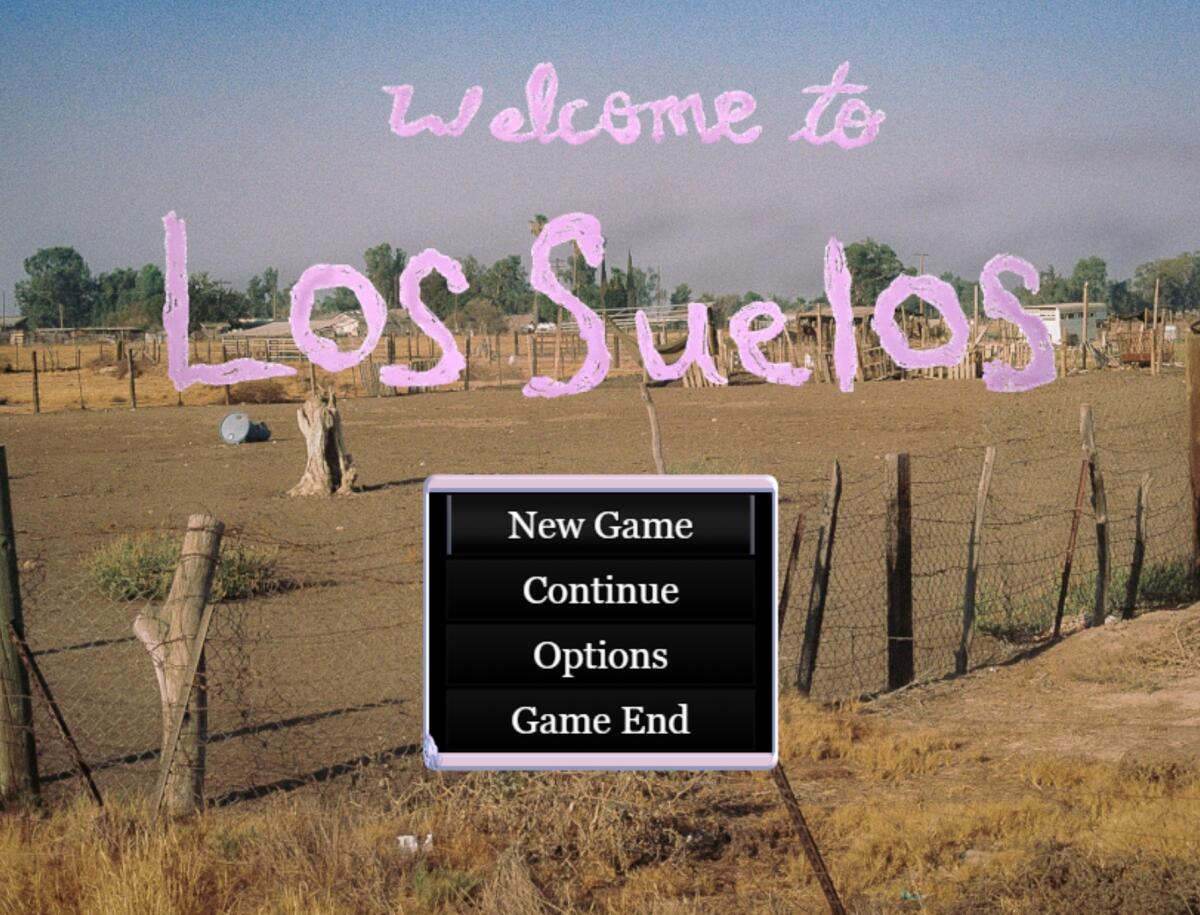
One of my favorite distractions as of late has been “Los Suelos, CA,” a truly unique multimedia project about a fictional town in the San Joaquin Valley that includes an anthology of interconnected short stories, an 8-bit role-playing game, artwork and even an entire album from Fluppies, a band invented solely for this venture.
“Los Suelos, CA” launched in March and was released by Surface Dweller Studios, a multimedia publishing company formed in 2021 by a collective of artists and writers.
“We were basically trying to stave off insanity,” Barton Aikman, a member of the group, said of the origins of the project.
Conceived during the pandemic, “Los Suelos, CA” was originally intended to be a collection of short stories. Thanks to a grant of nearly $49,000 from the Interledger Foundation Grant for the Web, the project snowballed into something bigger.
“It eventually got to the point where we weren’t making an anthology. Eventually, it felt like we were making a small town,” Aikman said.
In the end, more than 60 collaborators — writers, musicians, video game designers and artists — contributed to the creation of a place where something strange is going on.
“It speaks to what happens when you have collaborative work,” said Lauren Lavin, another member of Surface Dweller Studios.
“Here’s a safe, little imaginary playground for you guys to do whatever you want. It’s sci-fi, it’s about disease, it’s fantasy,” Lavin said of the guidelines given to contributors.
But perhaps my favorite part of this project is that all proceeds are going directly to the California Rural Legal Assistance Foundation.
You can find “Los Suelos, CA” here. And if you’re working on a cool Latinx or Latinx-adjacent project, hit me up at [email protected]. I’d love to know more about it.
Adios, Vin.
Vin Scully, the longtime voice of the Dodgers, died on Tuesday. He was 94. A lot more talented people than I have written beautiful tributes to arguably the most beloved man in Los Angeles, so I’m just going to point you in that direction. But before I do, I’ll mention that I still get chills listening to Scully call Fernando Valenzuela’s 1990 no-hitter. Truly legendary stuff.
- Vin Scully, forever the voice of the Dodgers, dies at 94
- Bill Plaschke: Vin Scully’s voice, a serenade of rebirth, will live on forever in Los Angeles
- ‘He was the Dodgers.’ Players and broadcasters mourn the loss of Vin Scully
- The Dodgers lost their voice when Vin Scully died. Angelenos lost a family member
- Gustavo Arellano: Vaya con Dios, Vin Scully — a beacon of possibility for generations in L.A.
- Dylan Hernandez: ‘Mr. Scully’ had a playful side that helped a young sportswriter feel important
You can go here for full coverage of Vin Scully’s passing.
And now for something a little different.

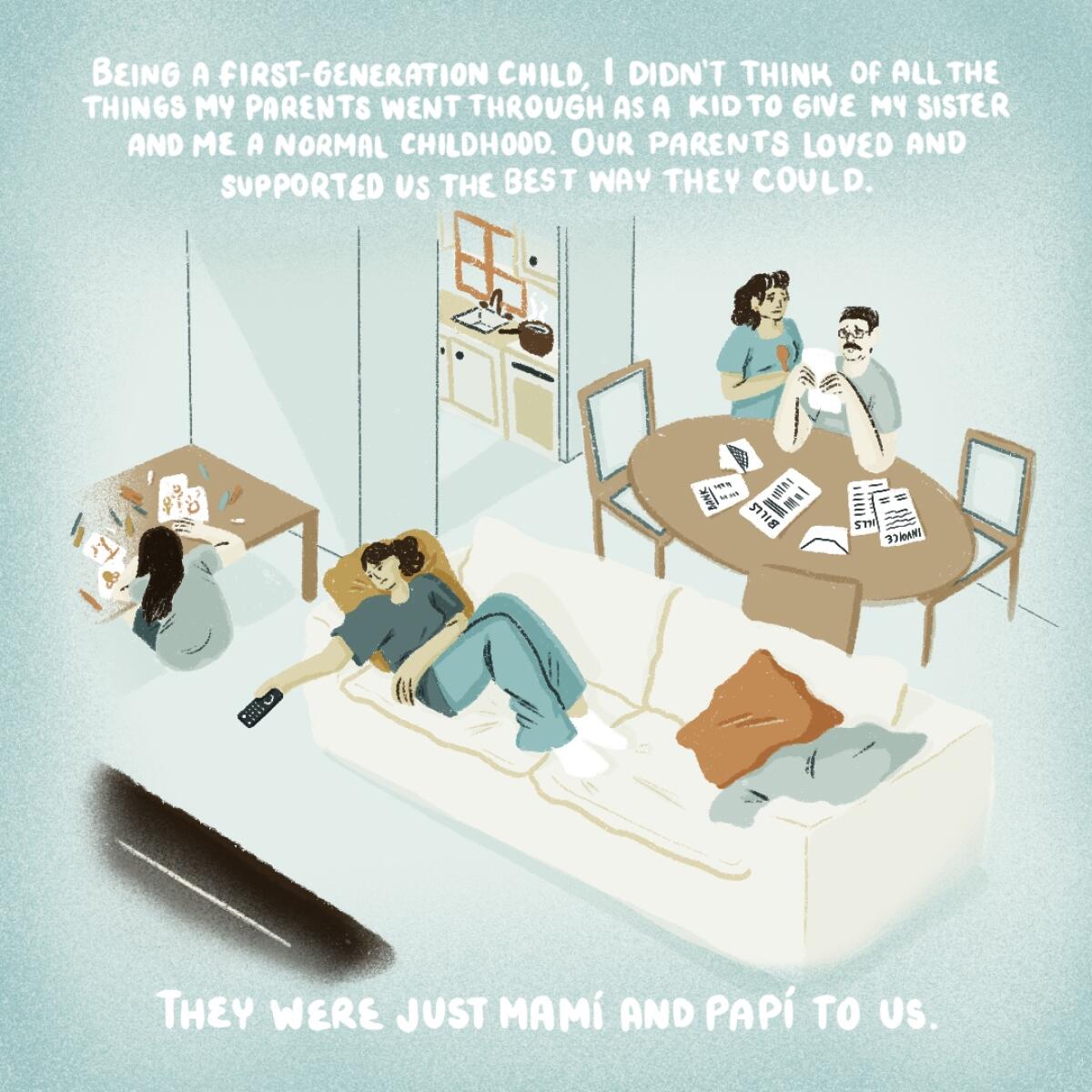
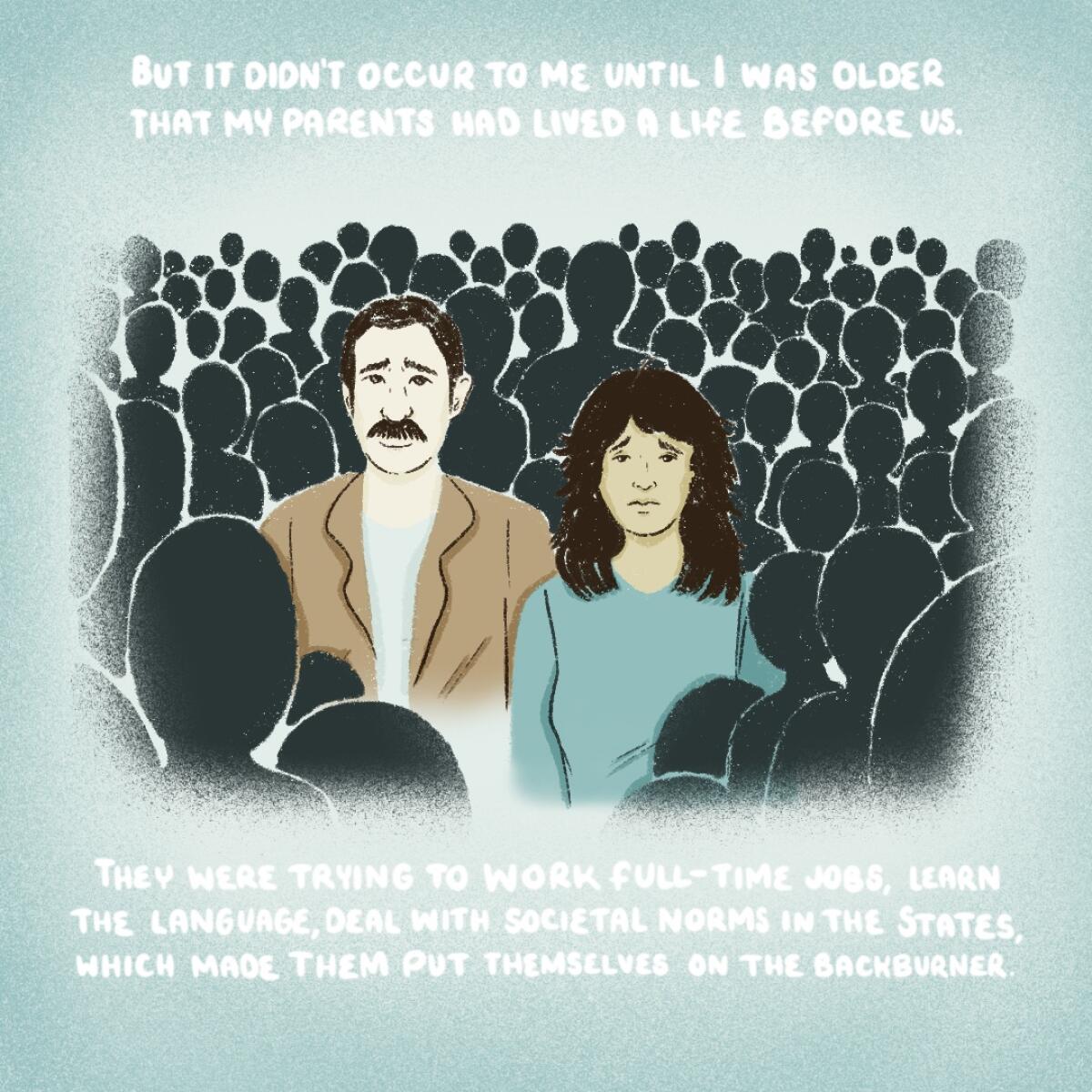
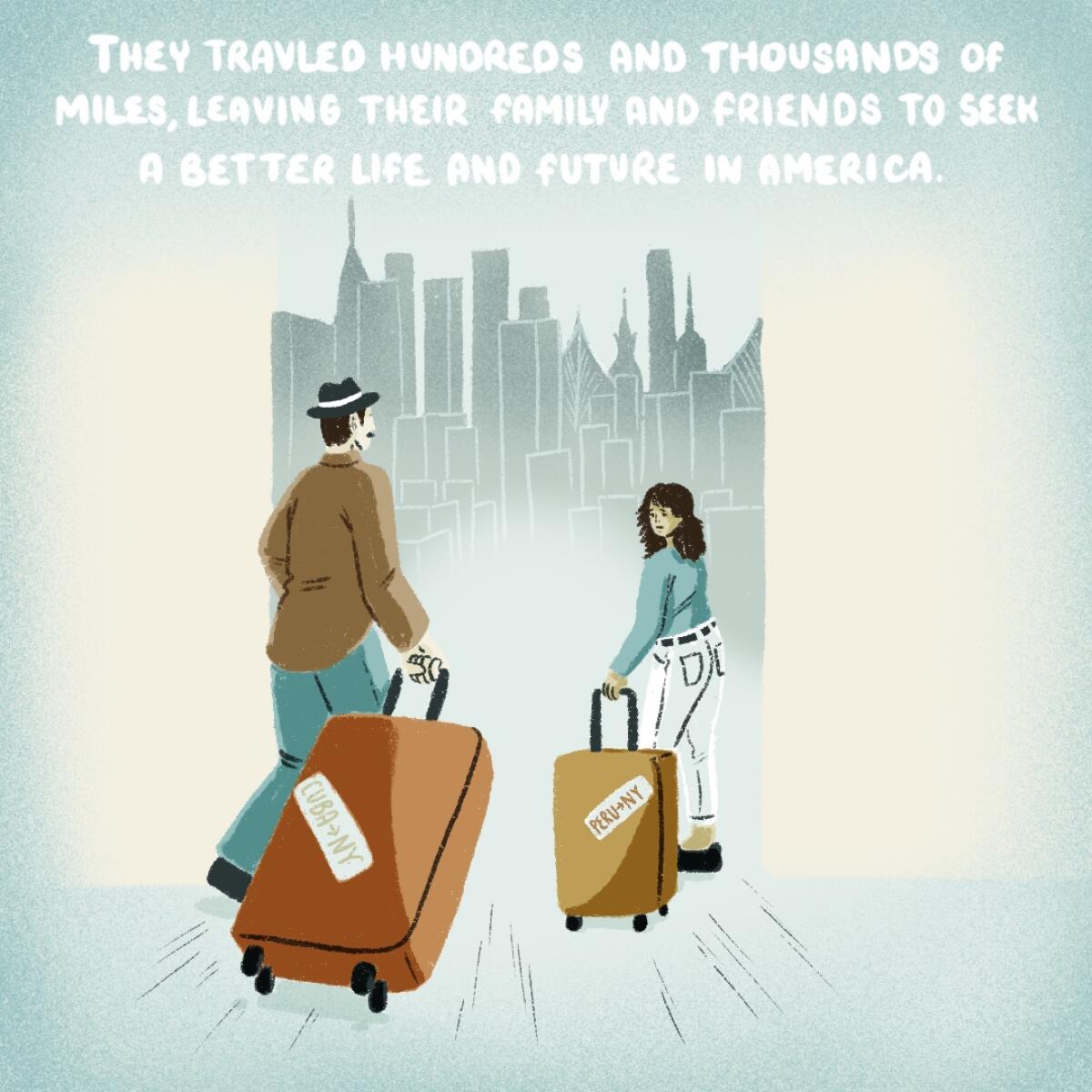
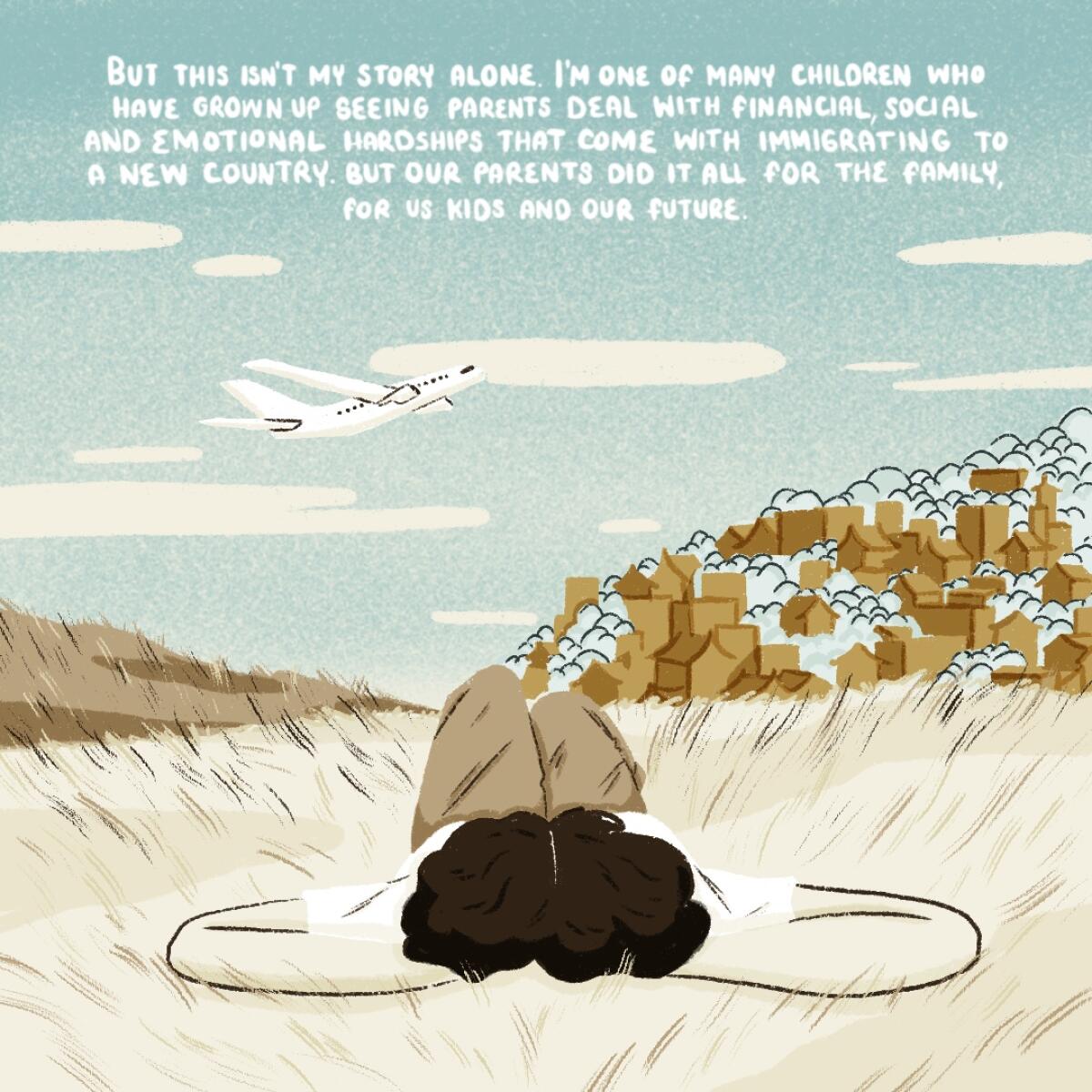
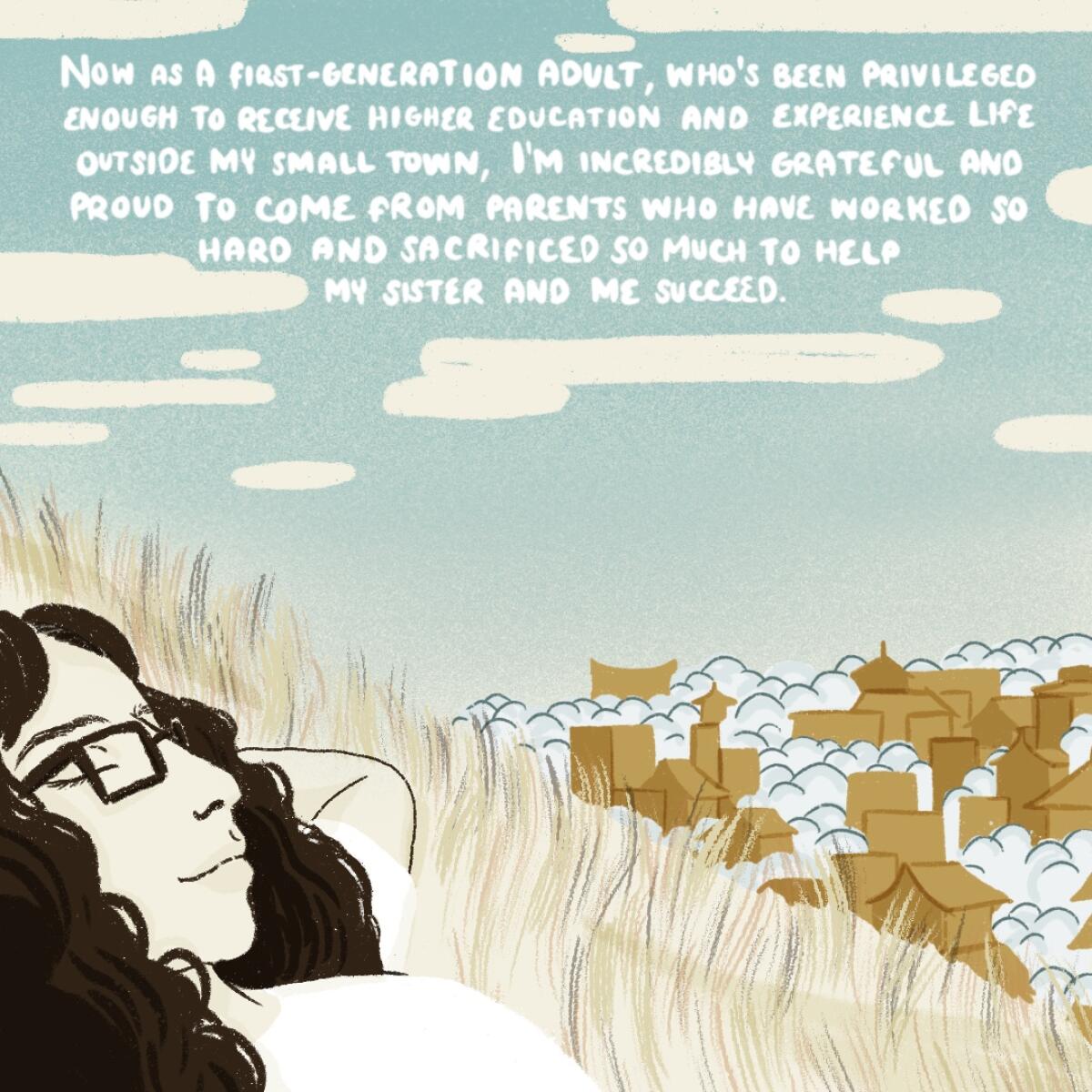
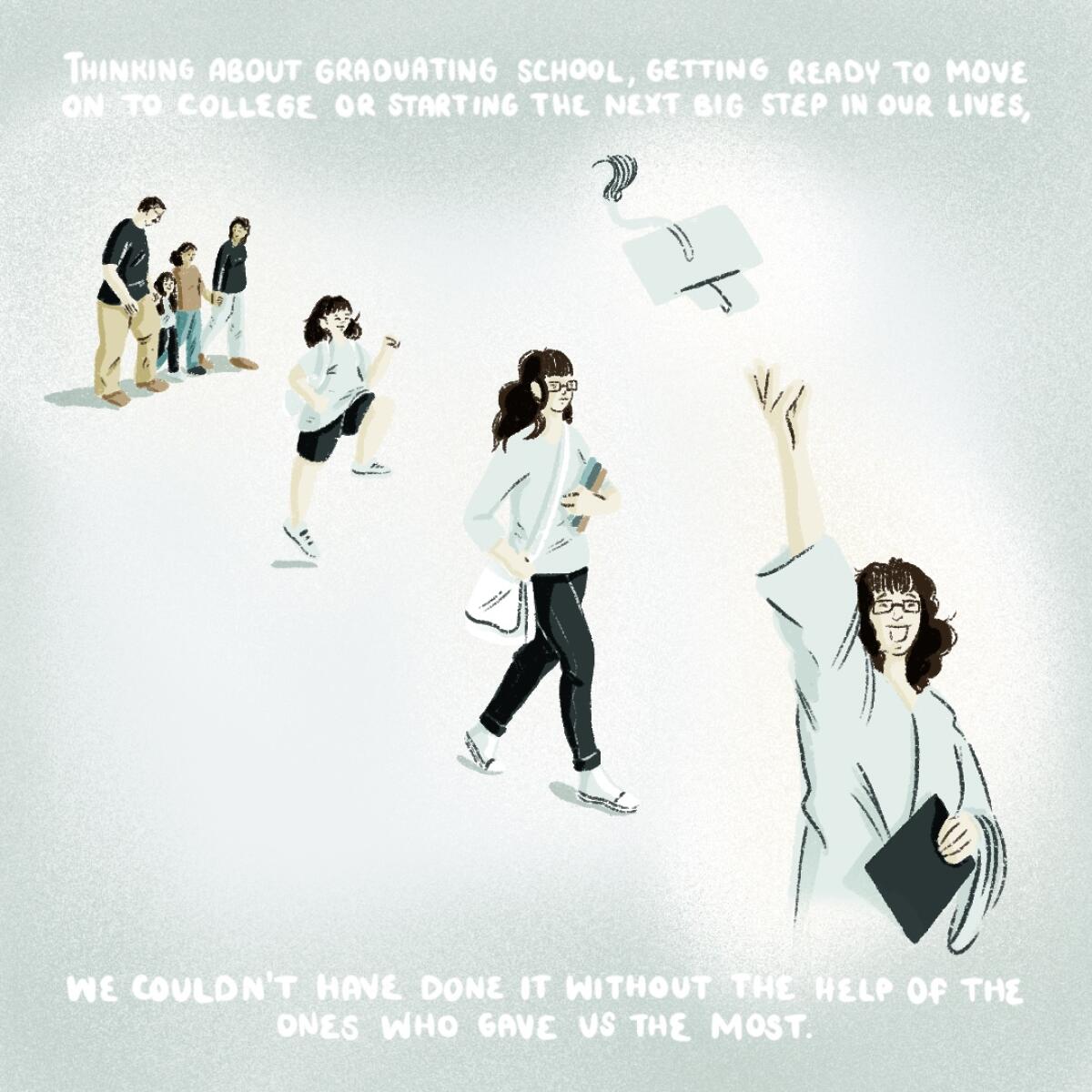
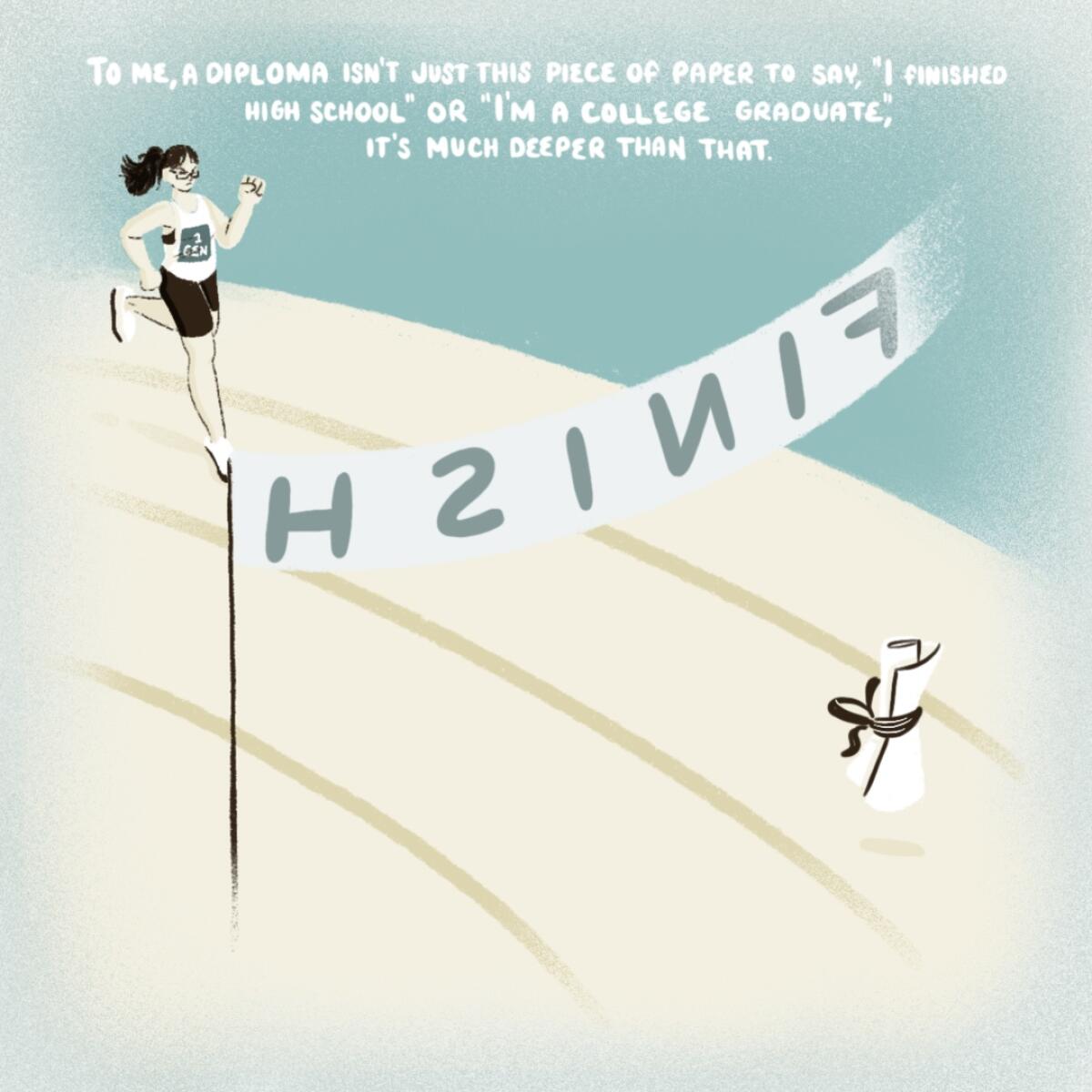
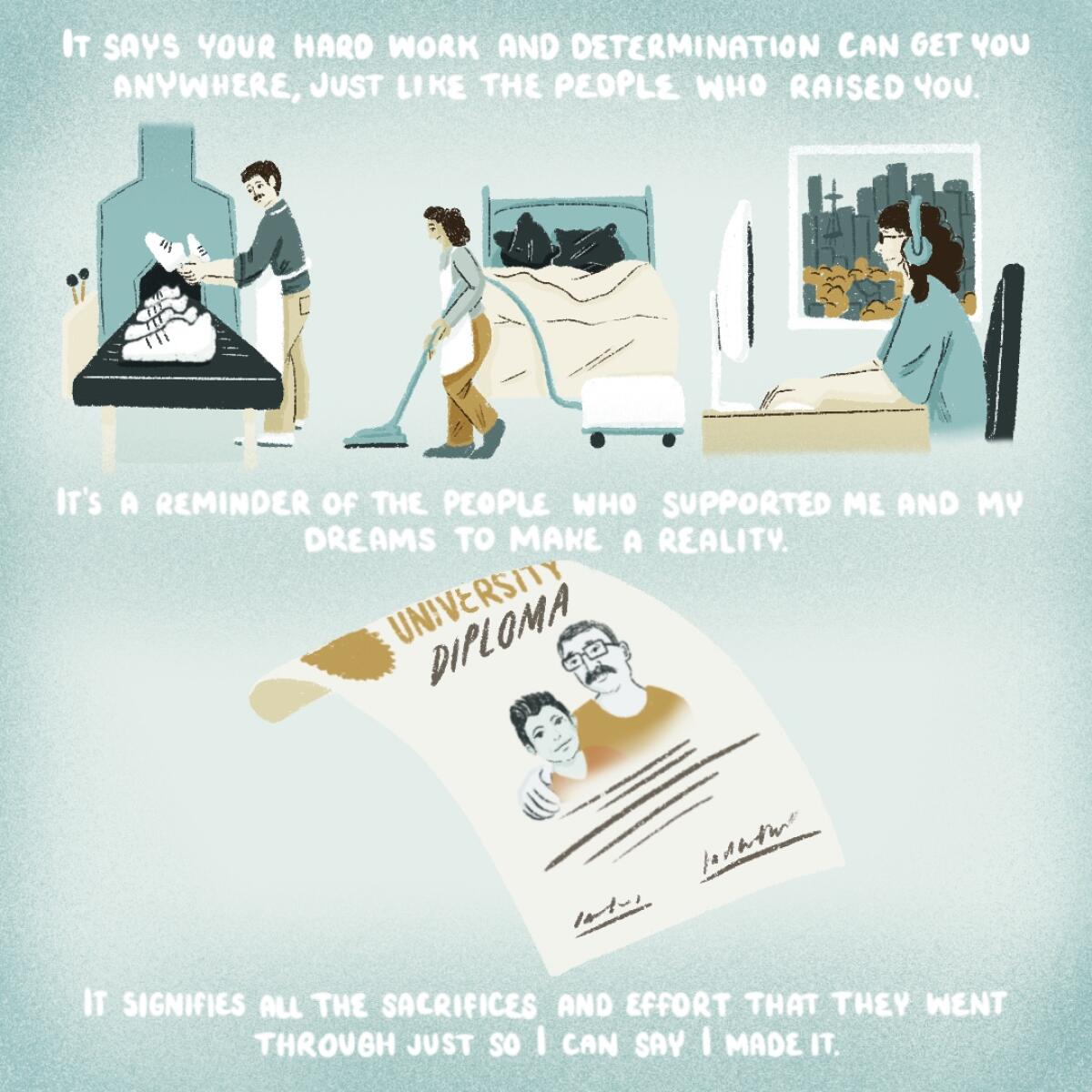

Sam Vassallo is a Latina illustrator from the Hudson Valley in New York and currently teaching English in Japan. You can find her on Instagram and TikTok, where she shares her artistic process and life in Japan.
Vassallo decided to illustrate and write about what it means to graduate as a first-generation child to her and to many others who grew up in similar situations.
“Growing up with immigrant parents isn’t always easy but there is a great appreciation for the people who support and care in helping you achieve such a large and important milestone, such as graduating,” she said.
“Creating this comic is a dedication to my own parents and a congratulations to all the other first-generation graduates and their families that can also say, ‘We’ve made it.’”
Are you a Latinx artist? We want your help telling our stories. Send us your pitches for illustrations, comics, GIFs and more! Email our art director at [email protected].
The Latinx experience chronicled
Get the Latinx Files newsletter for stories that capture the multitudes within our communities.
You may occasionally receive promotional content from the Los Angeles Times.




